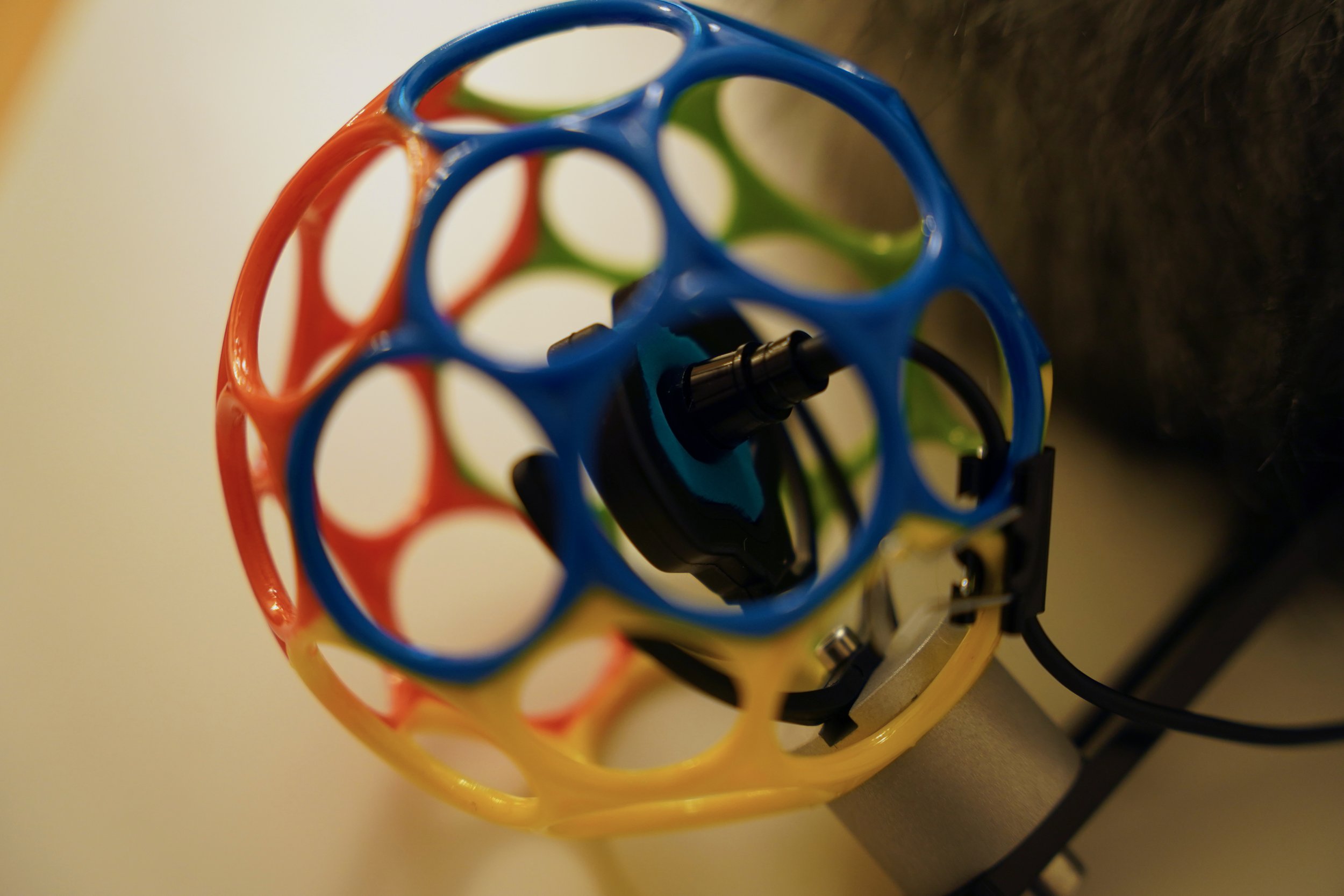Field Recording
full video of a 5 km run with stereo sound
Track and field recording
Field recording is the landscape or urban photography of sound. The general goal is capturing the world as it is, and it can be for documentation purposes, creating sound libraries, or searching for interesting or beautiful sound experiences. Field recording is also a nice excuse to go somewhere and listen actively. I like heading out with carefully selected equipment, setting up a system, pressing buttons, configuring, and then trying to stand silently in a forest for a while.
Most field recording is static, with stationary microphones in a place. Some people capture the acoustic ambience of a city, walking around with microphones poking out of a backpack. I wanted to go “one louder” and try to record good audio of running noises, and racing noises.
Vibration, wind, and portability are challenges when recording audio of running. In the weeks leading up to a local 5 km road race, I experimented with different microphone types and placements. I was never quite pleased with the results, so on race day, I used the best version of everything and hoped for the best.
I had a Zoom F2 omni lav on my chest, stereo Earsight Nanos positioned mid-back going to a Sony PCM A10, and the wild head thing in the pictures below. The microphones are Clippys, and the recorder is a Zoom F3. The microphones are clipped to the bill of the hat to be out of the wind, and away from my breathing. Each has its own little wind shield to keep it out of the free-stream air. The big blue fin is for sound separation. A stereo effect can be achieved with directional microphones or spaced microphones. If they are omni-directional and close, the separation can be physical (like ears). The “Jecklin Disk” is a way of separating microphones while maintaining close distance, and I modified that principle to fit on a hat.
The 5 km race video uses a combination of all three microphones. Despite the wind-blocking efforts, the head microphones had too much wind noise, so windy parts of the race used the back microphones. When running through the crowd, the cheers caused clipping in the back microphone system, but the head microphones used a recorder with greater dynamic range so they sounded great. Not my fastest, but okay.


V2. There isn’t anything off-the-shelf that does exactly what I want, and the existing systems are expensive if they still need modification. https://saralana.xyz/windscreen had a good idea to use a toy as the main structure, and I designed a simple aluminum mount that clamps the colorful frame and the vibration isolation lyre. The model is parametric, with Grasshopper in Rhino and if I do it again, I’ll include a cord clamp. With the dead airspace, this should have better wind protection, but it might need a thin layer around the main structure. Work in progress.






The new system on a small bar on a hat is too heavy, but it works well mounted on the back. It sounds good, but is getting a little away from the lightweight system I envisioned at the start.


